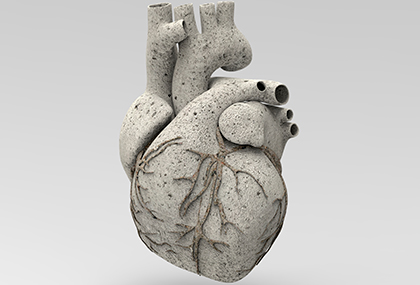Vascular calcification is a predictor of difficult stent positioning and expansion, which increases the chance of device failure (even with last generation stents). Calcium modifying strategies are being developed to reduce these difficulties.

Two recent randomized studies compare different calcium preparation devices. The PREPARE-CALC compares rotational atherectomy (RA) against plaque modifying balloons (PMB = cutting / scoring balloons) and the ISAR-CALC compares super high-pressure balloons (SHPB) against PMB. In both studies, stent expansion was assessed by optical coherence tomography.
Patient-level data from both randomized trials were pooled to look at the efficacy of the different strategies to prepare severely calcified lesions.
Between September 2014 and October 2017 data from 200 patients were obtained. The strategies involved rotational atherectomy with Rotablator, scoring balloons (AngioSculpt, Angioscore or ScoreFlex), cutting balloons (Flextome) and super high-pressure balloons (OPN).
Read also: TCT 2022 | RADIANCE II Pivotal Trial.
Primary end point was stent expansion assessed by CTO. Secondary end points were stent eccentricity, stent asymmetry, acute lumen gain, strategy success and in-hospital adverse cardiovascular events.
Rotational atherectomy was used in 63 patients, plaque modifying balloons in 103 and super high-pressure balloons in 34. They were mostly men, with multivessel disease, and target lesions mostly in the anterior descending.
RA vs. PMB or SHPB preparation rendered comparable stent expansion (73.2%±11.6 vs 70.8%±13.6%vs 71.8%±12%, P=0.49), and protocol analysis showed the same results. Patients treated with SHPB saw less stent eccentricity compared to RA (0.74±0.09 vs 0.70±0.06 vs 0.70±0.08, P=0.03), with similar results at protocol analysis. Acute lumen gain was numerically hihger when lesions were prepared with SHPB vs. RA and PMB (1.88±0.43 vs 1.69±0.38 vs 1.79±0.41, P=0.08).
Read also: TCT 2022 | BYPASS CTCA.
Strategy success was higher with RA compared against PMB and SHPB (100% vs 86.4% vs 91.2%, P ¼ 0.002); crossover requiring RA as complementary strategy occurred in 5.8% of the PMB and 8.8% of the SHPB patients. Target vessel MI during procedure happened in 3.2% of RA and 2.9% of SHPB patients, with no differences.
Conclusions
Looking at these CTO data pooled from randomized studies, we’ve found that RA, PMB and SHPB presented comparable stent expansion, while SHPB showed the best eccentricity. Strategy success was higher with RA.

Dr. Omar Tupayachi.
Member of the Editorial Board SOLACI.org.
Original Title: Rotational Atherectomy or Balloon-Based Techniques to Prepare Severely Calcified Coronary Lesions.
Font: Rheude T, Fitzgerald S, Allali A, et al. Rotational Atherectomy or Balloon-Based Techniques to Prepare Severely Calcified Coronary Lesions. JACC Cardiovasc Interv. 2022;15(18):1864-1874. doi:10.1016/j.jcin.2022.07.034.
Subscribe to our weekly newsletter
Get the latest scientific articles on interventional cardiology





